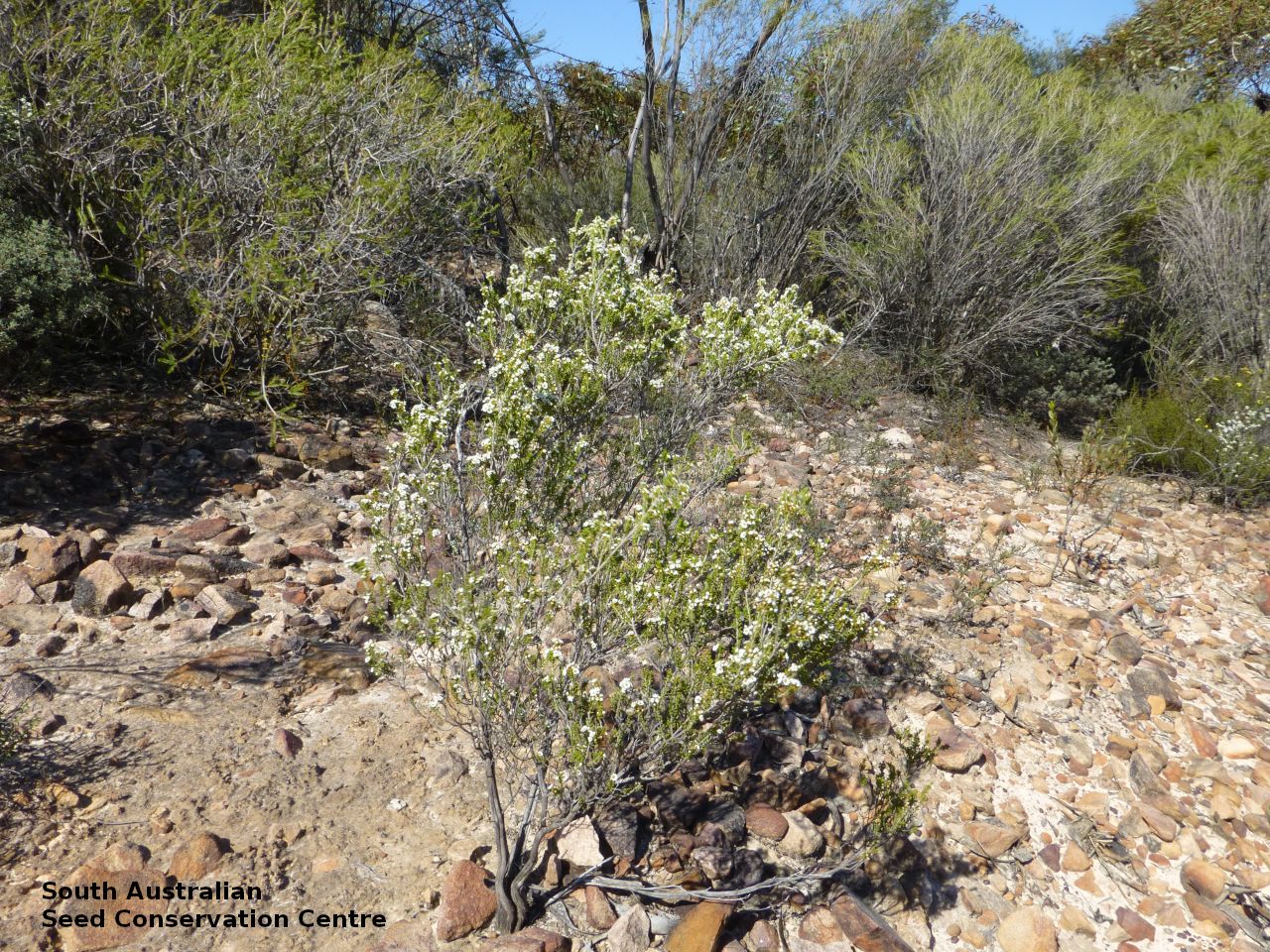
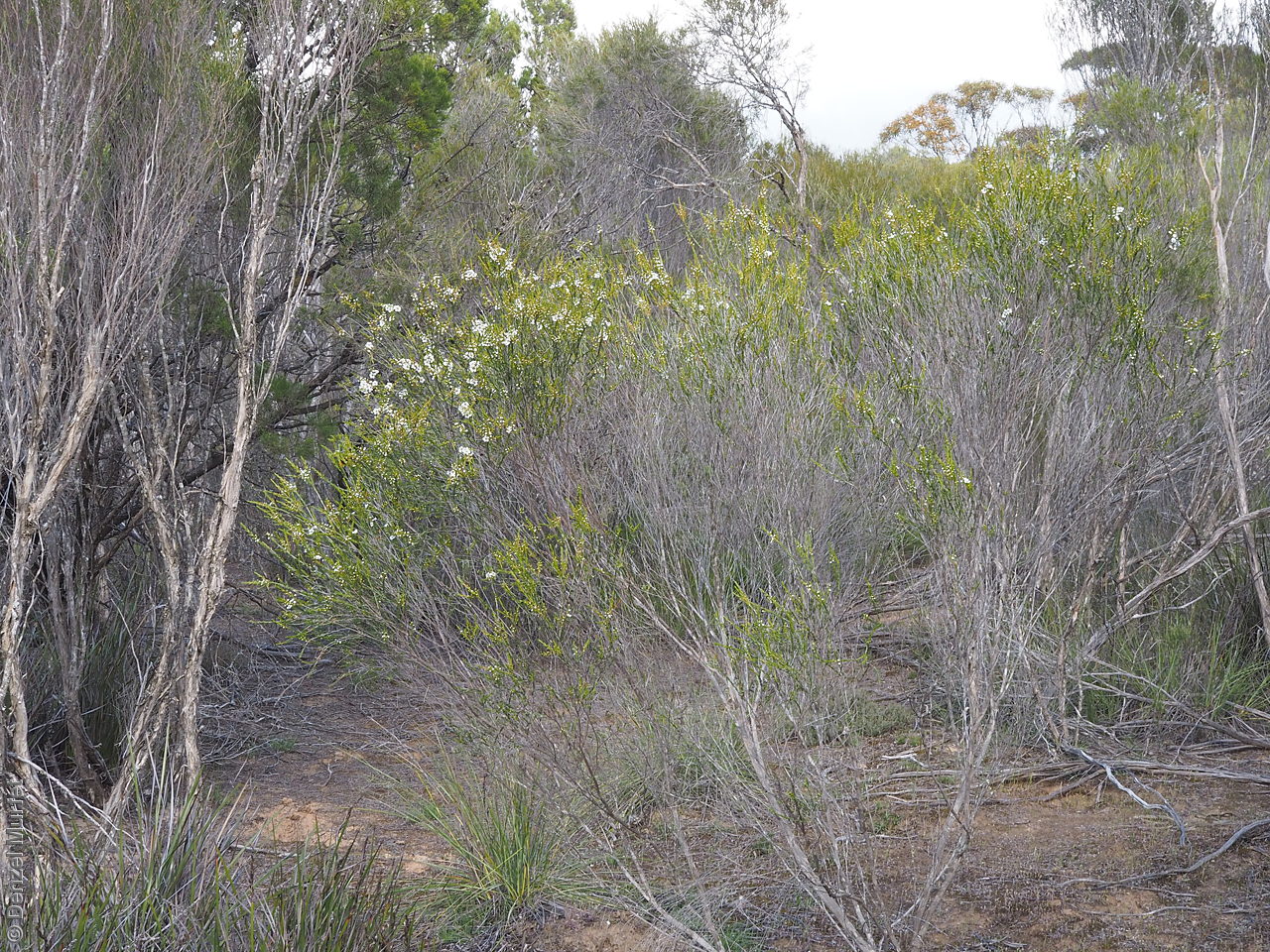
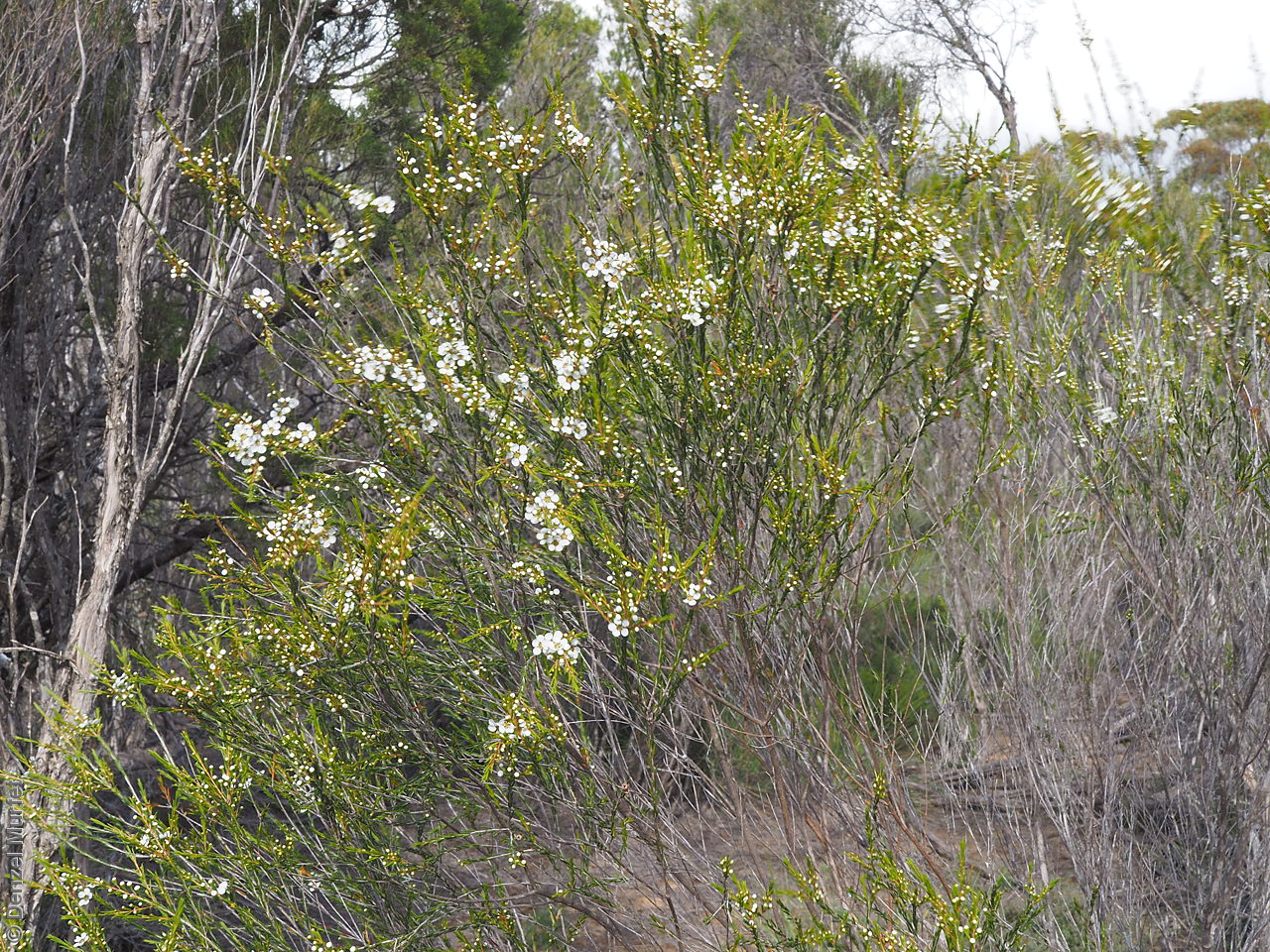
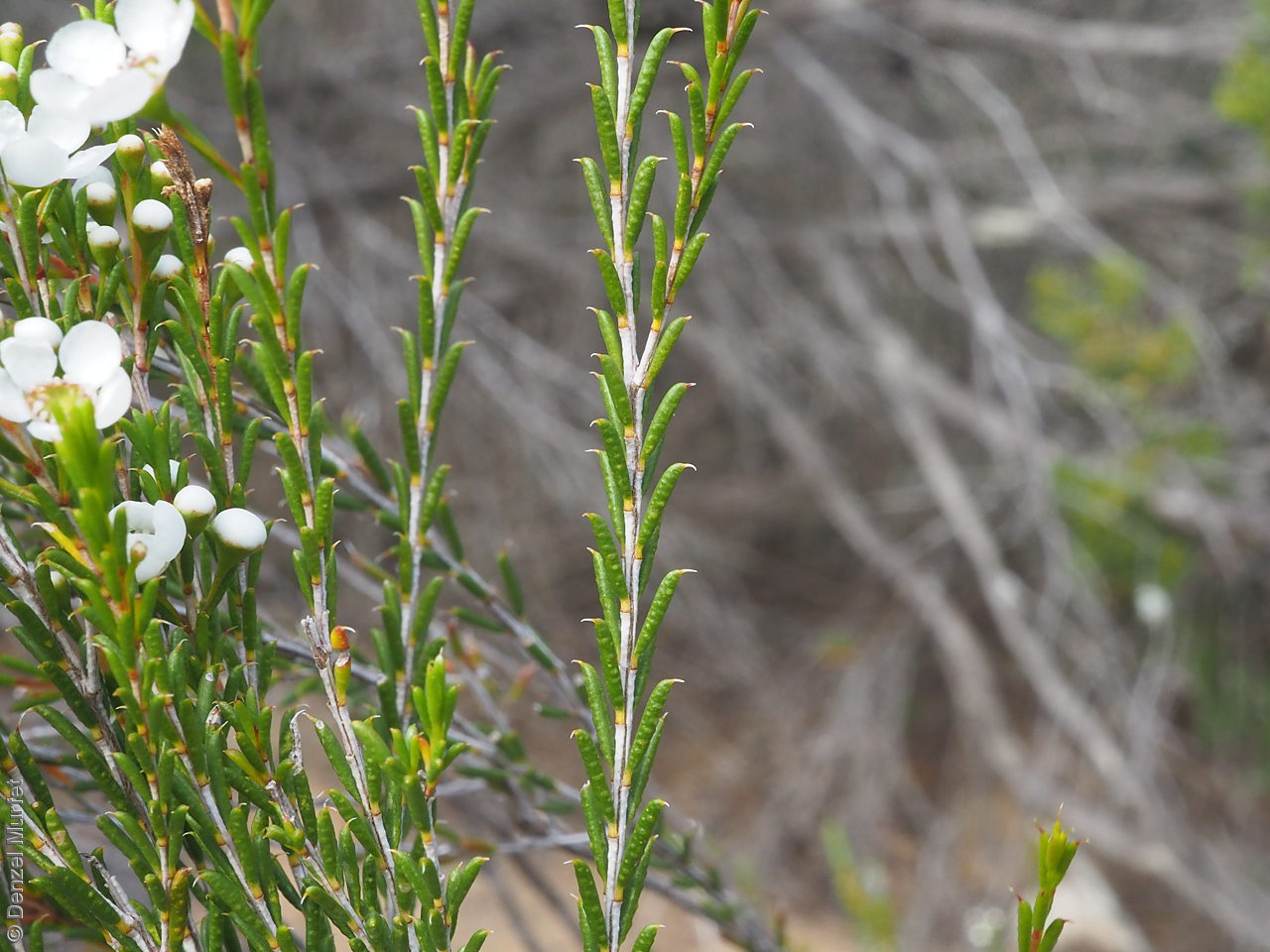
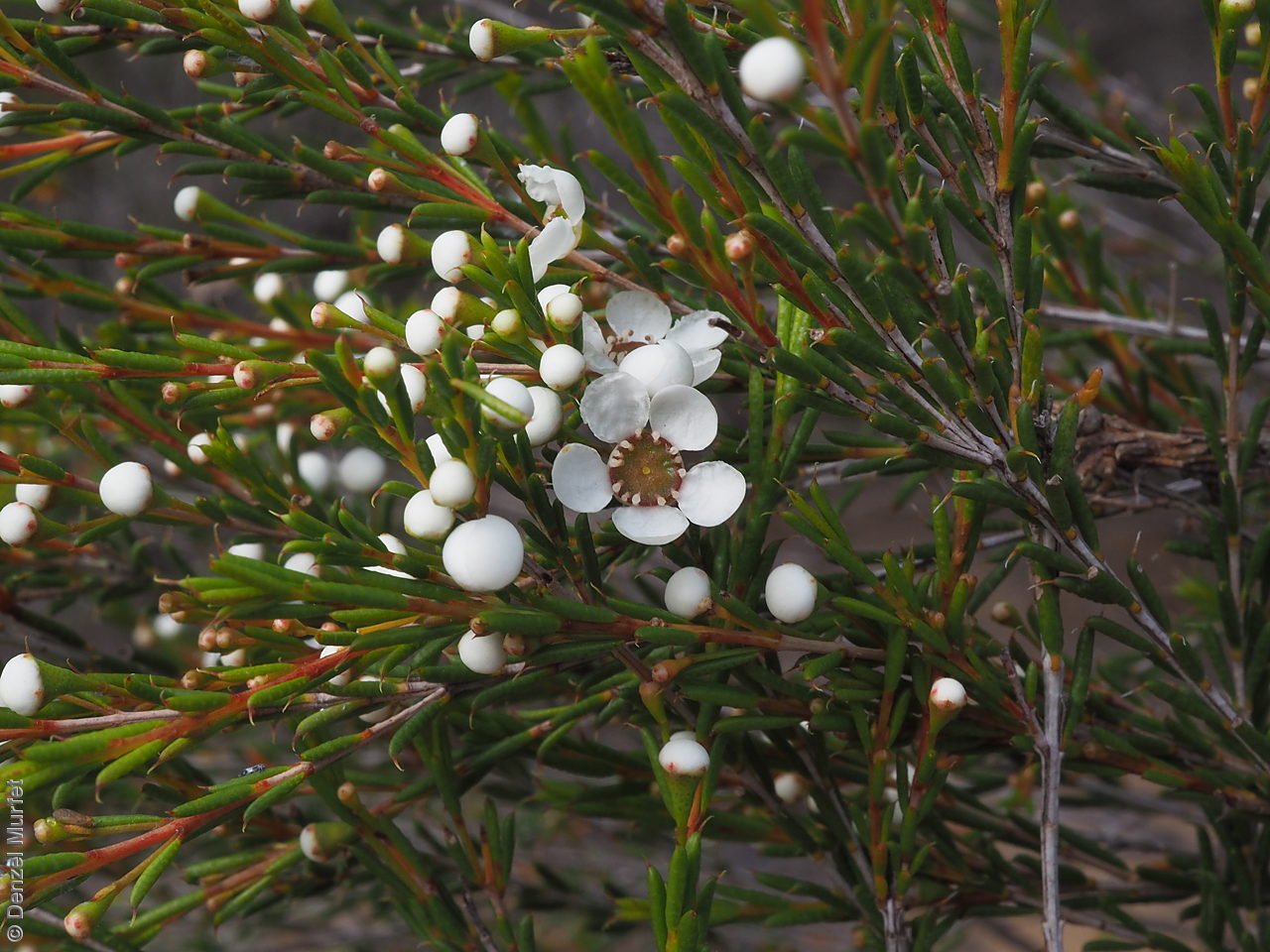
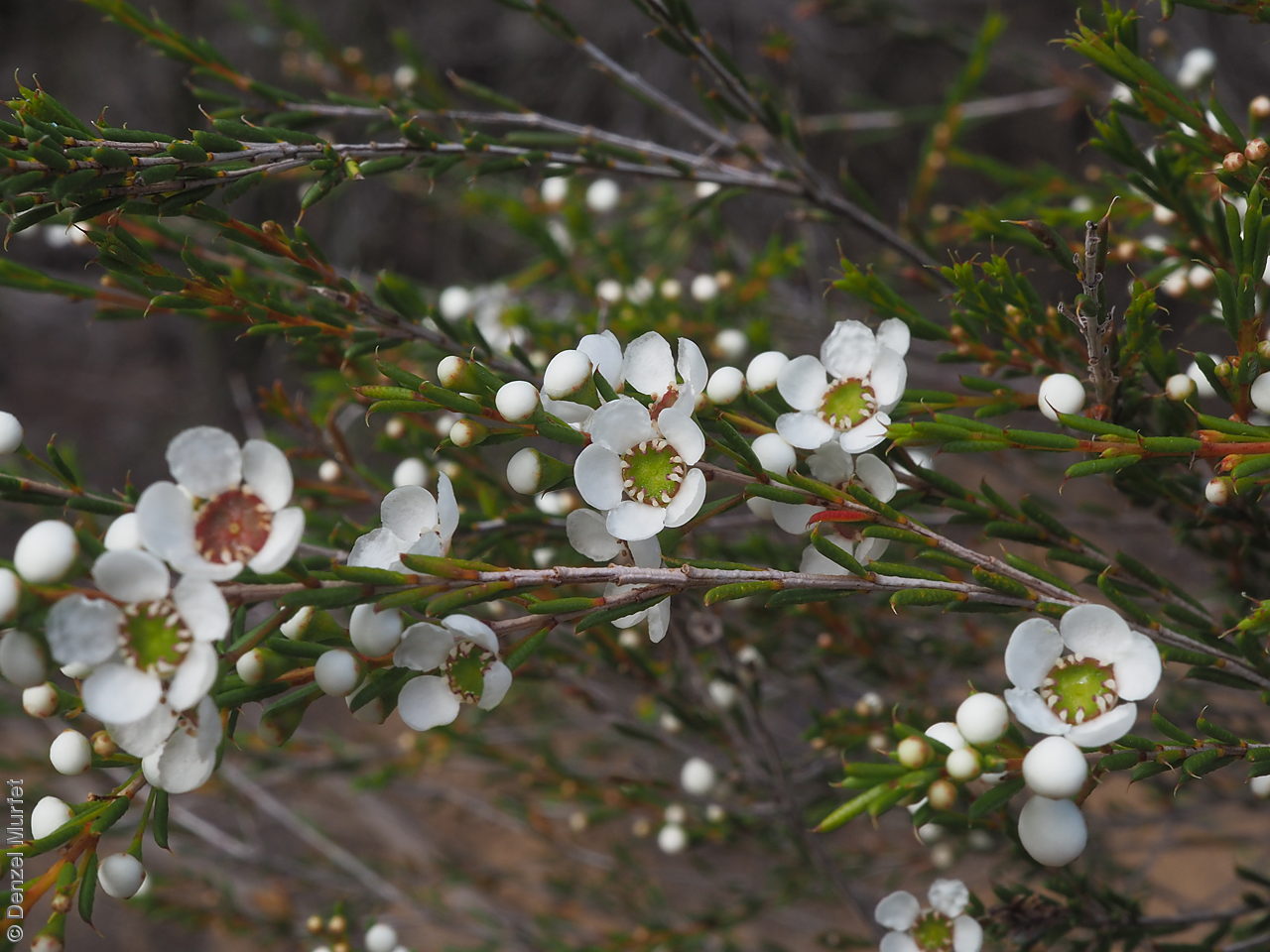
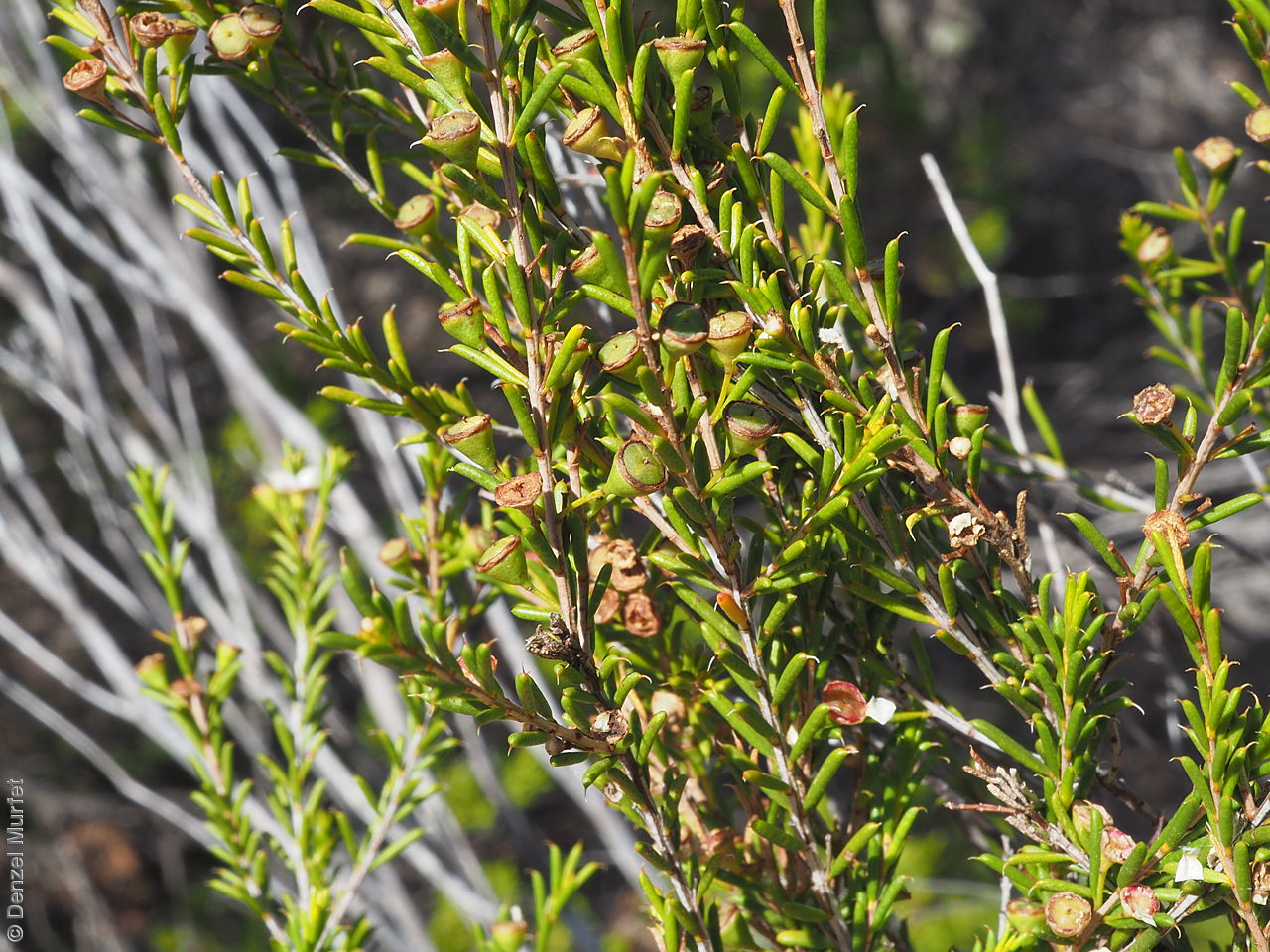
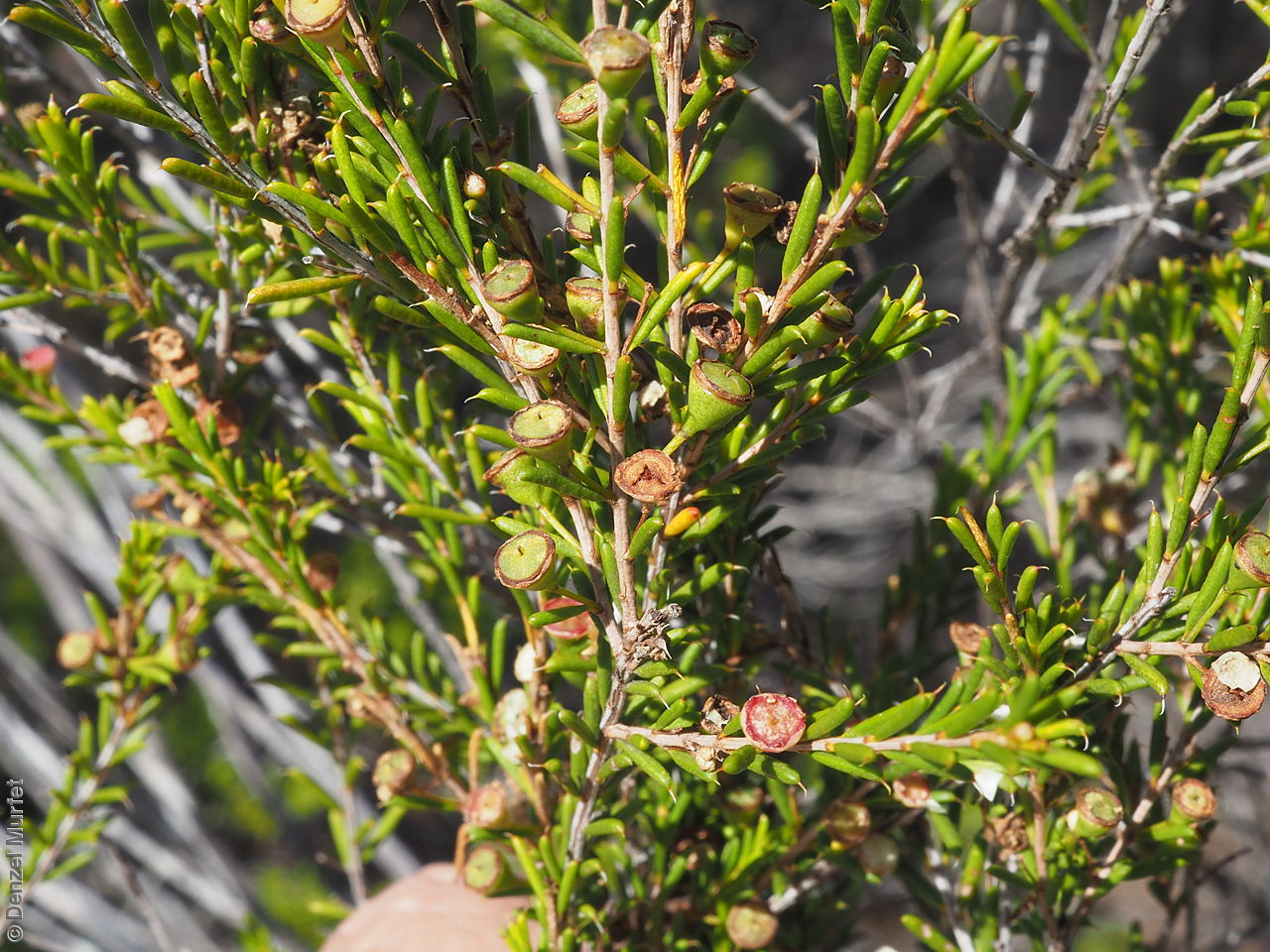
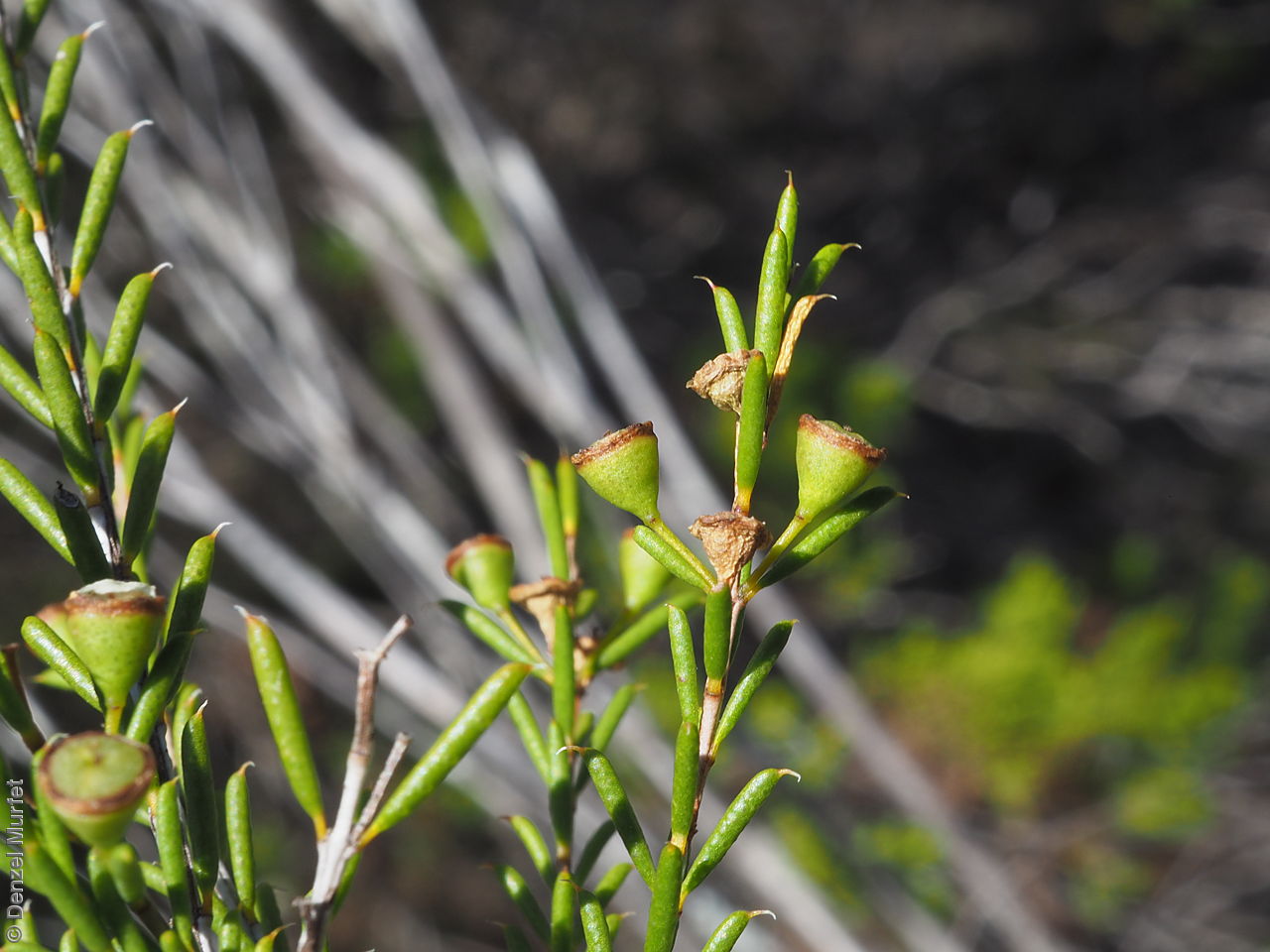


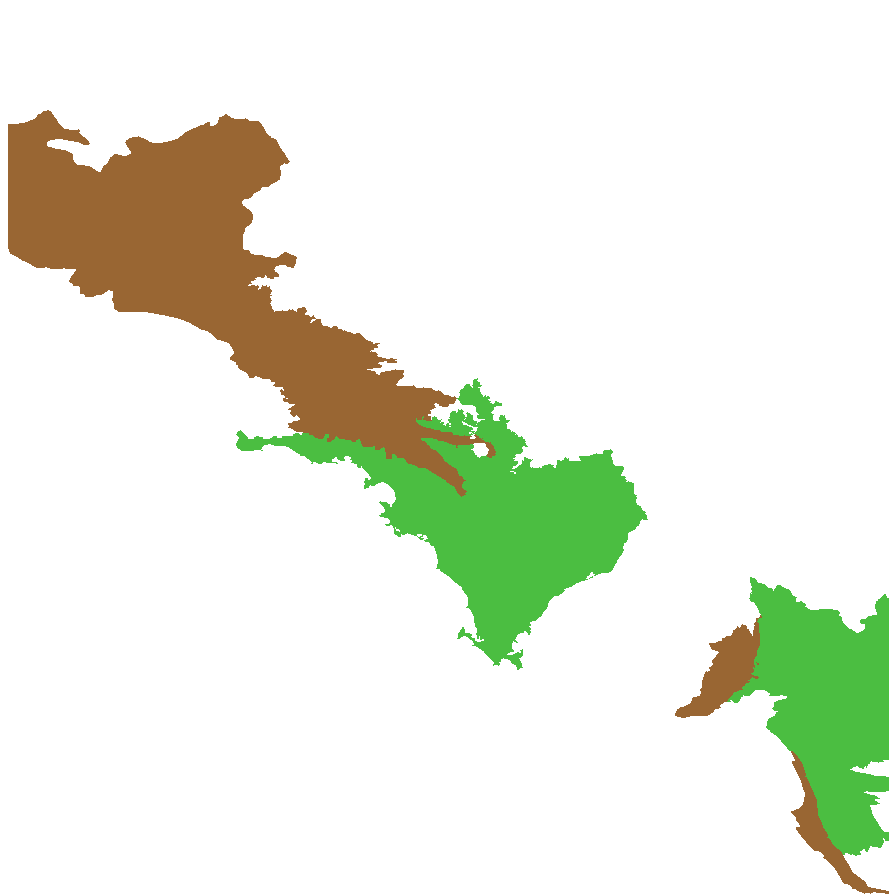
Botanical art
Prior names
Babingtonia behrii
Camphoromyrtus behrii
Baeckea behrii
Common names
Broom Baeckea
Silver Broombush
Etymology
Babingtonia, named after Charles Babington (1808-1895), an English professor of botany. Behrii ,named after Hermann H. Behr (1818-1904), a German-American doctor, entomologist and botanist, who collected in South Australia.
Distribution and status
Grows in a range of habitats in low rainfall areas on Eyre Peninsula, Murray Mt Lofty Ranges and upper South-east regions of South Australia, with isolated populations in the north-west corner; growing on sand rises and dunes and granitic soils, in mallee and heath communities. Also found in Western Australia, Northern Territory, New South Wales and Victoria. Native. Common in South Australia. Very rare in the Northern Territory. Rare in New South Wales. Common in the other States.
Herbarium regions: North Western, Eyre Peninsula, Northern Lofty, Murray, Southern Lofty, South Eastern, Green Adelaide
NRM regions: Adelaide and Mount Lofty Ranges, Alinytjara Wilurara, Eyre Peninsula, South Australian Murray-Darling Basin, South East
AVH map: SA distribution map (external link)
Plant description
Shrub to 2.5 m tall, with erect branches. Leaves opposite, semi-terete, usually with a fine recurved point; to 7mm long. Flowers solitary or rarely in pairs; axillary, 5 white petals. Flowering between September and January. Fruits are woody grey-brown capsule with 3-5 valves. Seeds are seeds are angular, pale-brown, less than 1mm.
Seed collection and propagation
Collect seeds between February and April. Collect mature capsules, those that are hard with non-open valves. Place the capsules in a tray and leave to dry for a week or two. This allows the valves on the fruit to open and release the seeds. Separate the seeds by placing all the materials into a bucket and shaking it to dislodge the seeds. Pass the material through a sieve to separate the unwanted material. The finer material will contain both seeds and frass usually distinguishable from each other. With finer sieves, the seeds can be separated from the frass but this is not essential for storage or propagation. Store the seeds with a desiccant such as dried silica beads or dry rice, in an air tight container in a cool and dry place. From one collection, the seed viability was high, at 95%.
| Location | No. of seeds (weight grams) | Number of plants | Date collected | Collection number Collection location | Date stored | % Viability | Storage temperature |
|---|---|---|---|---|---|---|---|
| MSB | 10,000 (2.378 g) | 30-40 | 26-Jan-2007 | KHB72 Southern Lofty | |||
| BGA | 23,000 (4.33 g) | 9 | 21-Apr-2008 | DJD1065 Eyre Peninsula | 19-Sep-2008 | 95% | -18°C |
Number of plants: This is the number of plants from which the seeds were collected.
Collection location: The Herbarium of South Australia's region name.
% Viability: Percentage of filled healthy seeds determined by a cut test or x-ray.